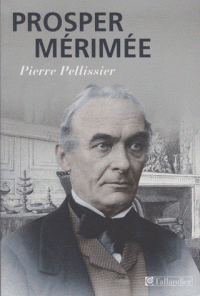History Prizes 2009
 FONDATION NAPOLÉON GRAND PRIX
FONDATION NAPOLÉON GRAND PRIX
Isabelle ROUGE-DUCOS, L’Arc de Triomphe de l’Étoile dans l’Art et l’Histoire, Paris, Éditions Faton
Plans for the redevelopment of the butte de l’Etoile into one of the capital’s landmarks were already in existence during Ancien Régime. However, the Arc de l’Etoile construction project was born from Napoleon’s desire to build a monument to his own glorious success and, more generally, as part of his transformation of Paris into a “New Rome”. Construction, which began under Napoleon, eventually came to an end in 1836, during Louis-Philippe’s reign. Perhaps the greatest monument of the Napoleonic period, the arch, through its architecture and sculpted facade, also reflects art trends of the early 19th century.
This book by Isabelle Rouge-Ducos is the first complete work on the Arc de Triomphe. The author describes the history of its construction, and in doing so highlights the various different plans produced by the architects in charge, designs and drawings by individual artists, and previously unseen photographs of the arch’s sculptures. She also explains the important commemorative role that the location has played in the nation’s collective psyche, including in such famous events as the Prussian’s bivouac in 1815, Victor Hugo’s funeral procession, the victory parade in 1918, and the liberation of Paris in 1944.
 FIRST EMPIRE PRIZE
FIRST EMPIRE PRIZE
Jean-Paul BERTAUD, Les royalistes et Napoléon, Paris, Flammarion
In this work, Jean-Paul Bertaud chooses to describe a unique moment in the history of France: the period during which royalist supporters, having barely escaped the Republic and the Terror, witnessed the rise of Napoleon, this usurper’s reign, and finally his fall. Bertaud retells the steps taken by the Royalists against the imperial regime: attempts on Napoleon’s life, numerous plots, acts of resistance – including on 21 January, 1800, the draping of the Madeleine all in black to mark the seven year anniversary of the king’s death on the scaffold -, infiltration of the police force, espionage and counter-espionage… This book brings the period back to life and introduces the reader to the main characters. Both the famous (Cadoudal) and the not so famous (unknown pamphleteers, authors of many of the most scathing attacks on the regime) feature, described with all the verve of a writer of fiction.
 SECOND EMPIRE PRIZE
SECOND EMPIRE PRIZE
Pierre PELLISSIER, Mérimée, Paris, Tallandier
Prosper Mérimée (1803-1870) was a true “enfant du siècle”: at times talented writer, inspector general for the protection of historical monuments, prisoner in the Conciergerie, academic, senator who served for fifty-years, and a shrewd confidant to some of the most important characters of the time, the story of Mérimée offers the reader a front-row seat to contemplate the fascinating 19th century.
Mérimée takes the reader on a journey alongside some of the most important authors of the period, including Stendhal, Georges Sand and Victor Hugo, to name just three. We are introduced to Paris, its salons and its intrigues. We step out into the provinces, the battlegrounds where Mérimée fought to save France’s historical monuments from falling into ruin. And we even take a trip across Europe, a continent still caught up in war and revolution. 1870 was the end for both the empire and this admirable man: however, despite his deeds and service, Mérimée’s death, shortly after the collapse of the regime, was met with almost widespread indifference.
